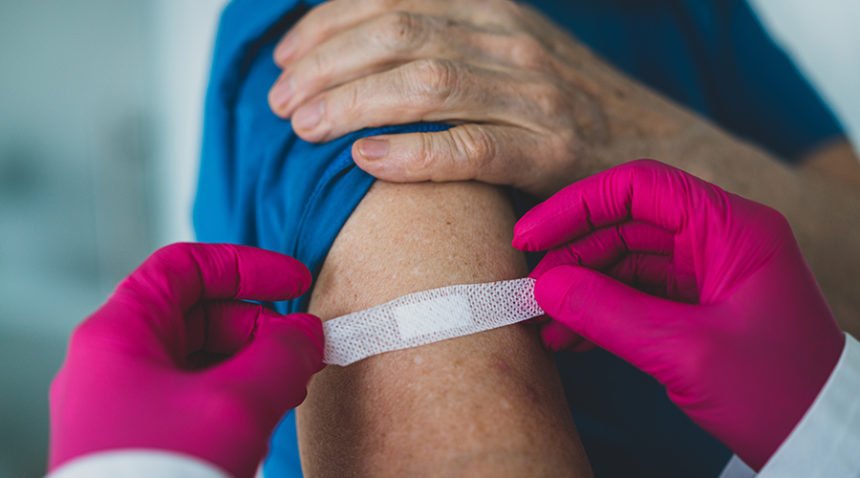When it comes to the development and deployment of COVID-19 vaccines, both of these statements are true: The vaccines have been produced in record time and no safety steps were skipped.
You may have heard someone wonder: “How could they be safe when they’re so new, and they were developed so fast?”
The answer: While COVID-19 is a new disease, the vaccine technology used is not. And finding ways to speed up vaccine production is possible without compromising safety standards that are universal for all vaccines.
Government agencies, private organizations and businesses banded together in an unprecedented way to develop COVID-19 vaccines. Vaccine developers realized that some parts of the process could happen at the same time; for example, manufacturing began during the approval process (but shots were not distributed before approval). Researchers worldwide dropped everything to focus on the vaccines and worked together when they otherwise wouldn’t have, and the federal government provided funding for clinical trials, eliminating financial hurdles.
In the U.S., the Food and Drug Administration (FDA) ensures the safety and effectiveness of vaccines, and all vaccines must meet the FDA’s high safety and quality standards.
There is no official timeline for developing a vaccine, and in a public health emergency, manufacturers can release vaccines through an emergency use authorization, which does not compromise vaccine safety. The available COVID-19 vaccines are available via emergency use authorization.
From Vaccine Candidate to Approval
Vaccines work by tricking our body into thinking a virus or bacteria that causes disease is attacking it. This fires up our immune system and builds resistance so if we are later exposed to the infectious agent, our body knows how to fight it.
The vaccine development process begins when researchers develop a vaccine candidate that they think can prevent a certain disease. If the candidate looks promising after initial testing, manufacturers—the companies that make vaccines—submit the researchers’ data to the FDA for approval so they can begin clinical trials.
Clinical trials are conducted in three phases:
In phase 1, the vaccine is given to a small number of healthy people to test its safety and effectiveness.
In phase 2, the vaccine is given to hundreds of people with different health conditions and from different races and ethnicities.
In phase 3, thousands of people across diverse demographic groups receive the vaccine, and immune responses are compared against people who received placebo doses—those that don’t contain any vaccine and are used for testing purposes only.
Once phase 3 trials are complete, the FDA reviews the data to determine whether the vaccine works and is safe. If so, the manufacturer files for approval. If the benefits outweigh any possible risks of the vaccine, and manufacturing quality can be ensured, the FDA will approve the vaccine for use.
UNC Health participated in the Moderna and Novavax COVID-19 vaccine trials.
In addition to federal reviews, the COVID-19 vaccines were evaluated by a team of epidemiology and infectious disease experts across UNC Health and the UNC School of Medicine.
What’s Next for COVID-19 Vaccines
The availability of safe and effective COVID-19 vaccines has played a major role in many communities being able to return to a level of normalcy. COVID-19 vaccines, like other types of vaccines, save lives.
Unfortunately, because of vaccine hesitancy, the U.S. has not reached community immunity, often called herd immunity. That means the pandemic continues as troublesome variants, such as the recent Delta variant, continue to pose a threat to unvaccinated people and the immunocompromised.
Children younger than 12 are not yet able to get a COVID-19 vaccine, but trials are underway for this population.
The Centers for Disease Control and Prevention (CDC), North Carolina Department of Health and Human Services (NCDHHS), and UNC Health recommend all those who are eligible receive a COVID-19 vaccine even if you have previously tested positive for COVID-19.

